Native American history is filled with tragedy, triumph, and perseverance. Long before Europeans stepped foot on the land known as America, Native American people thrived across every region of the wide-open territory.
As explorers colonized the land inch by inch, the indigenous people responded in various ways. Some cooperated with the Europeans, and others resisted. With the passing of President Andrew Jackson’s Indian Removal Act in 1830, American Indian tribes were removed from their life-sustaining territories and moved to more barren, less desirable lands.
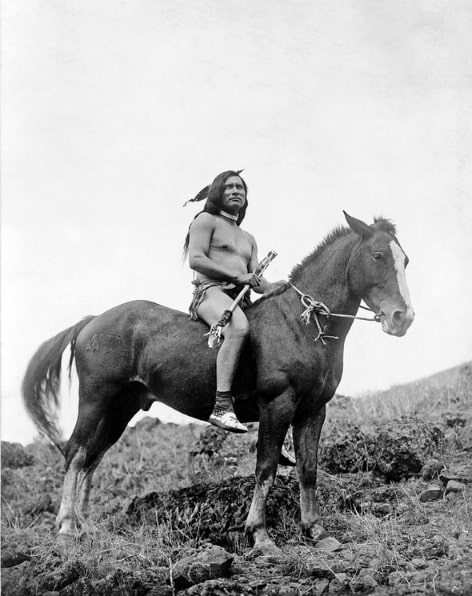
The Indian Removal Act and other tragic events diminished the population of Native Indians and many of their rich traditions. However, surviving Native Americans did what they could to preserve their culture for future generations. Today, Native American people are forging a new history filled with hope, community, and achievement.
Early Native American History
In earlier historical reporting, America’s indigenous Indians were often portrayed either as naive, peaceful people living in harmony with nature – or vicious warriors bent on scalping and murdering every European person in sight. The history of America’s original human occupants is much more complex than that, and it began long before Andrew Jackson, the Pilgrims, or Columbus.
Many of the theories used to explain the origins of the Aboriginal American people were based on racist ideas that rationalized the displacement and destruction of native civilizations. Until the 1980s, it was theorized that the first humans came to the Americas during the last ice age by walking across a vast area known as the “Beringia,” a now-submerged land mass that bridged the Bering Strait and connected North America (Alaska) with Asia (Russia).
However, the most recent archaeological evidence suggests that people lived in the Americas 5,000 to 8,000 years earlier than the ice-free walking routes theorized by the Beringia idea, so perhaps some people arrived by boat. Whatever the time frame or exact method, migration took place slowly over hundreds of years, not all at once.
The study of Paleo-Indians has revealed a history of agriculture, religious hierarchies, art, and individual cultures. Sharing their landscape with mammoths, mastodons, and giant bison, they hunted game and gathered wild plants for sustenance.
Like other prehistoric cultures around the globe, climate changes impacted where indigenous Americans lived and how they survived. As some climates became wetter or drier, it affected the amount of available food and forced Paleo-Indians to move toward richer areas wherever they were.
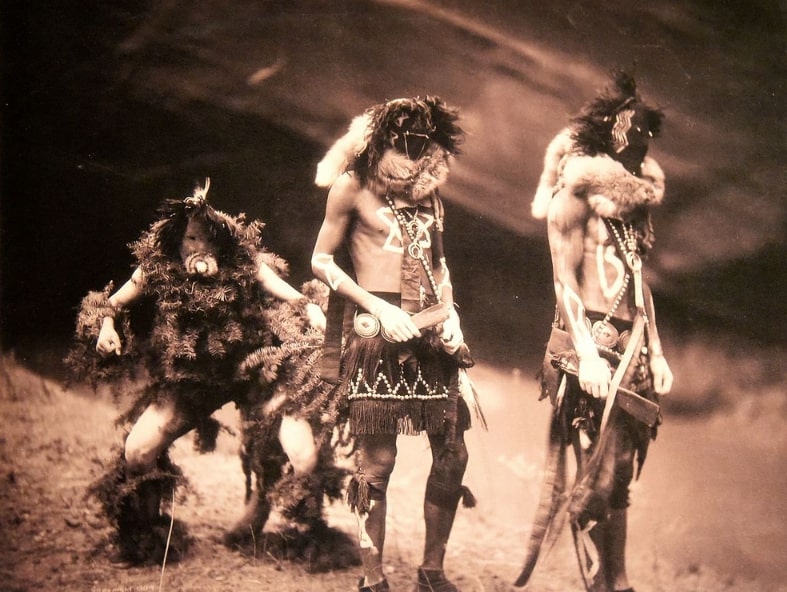
Materials unearthed in archeological digs show how Native American cultures developed household industries, pottery, and the creation of ceremonial regalia. These studies also shed some light on the distribution of food and other goods. Early Native Americans built homes from the materials available in their regions and developed organizational systems to foster community cooperation.
Native Americans passed down their history and traditions orally without written communication. Today, those interested in exploring Native American history rely on traditional arts, folklore, later literature, and archaeological findings to learn more.
Impact of European Settlement on Native American People
Explorers from France, England, and Spain began arriving in the “New World” in the 1500s. These adventurers encountered the far-reaching and well-established way of life of Native American Indians, who had occupied the North American continent for nearly fifty thousand years.
The arrival of Europeans brought many changes to the lives of Native Americans. Unfortunately, most had a negative impact. European explorers brought a host of diseases to these communities that had no immunity. Measles, smallpox, chicken pox, and influenza ravaged Native American populations, sometimes decimating entire villages within a short time.
These diseases were transmitted both innocently through peaceful contact with Europeans and maliciously to purposefully diminish the numbers of Native American people. Experts believe as much as 90% of the Native American population died from diseases introduced by Europeans.
Trade was another change that Europeans brought to America. The Native Americans and the Europeans were interested in the benefits of trading. Native Americans were fascinated with guns and other objects made of metal. The desire for European goods changed traditional Native American trading patterns. They started hunting for fur hides to trade for European weapons, metalware, and rum.
Another change was enslavement, which impacted Native populations in painful ways that affected generations of Native Americans to come. Some whites made slaves of their Native captives, and some tribes captured members of other tribes and sold them to European slave traders in exchange for goods. Afterward, they were forced to work on farms and plantations.
The practice of enslaving Indians gradually ended as more enslaved Africans arrived in America for labor. However, many tribes moved, disbanded, and did all they could to remain hidden to escape the slave trade.
All of these shifts eradicated some tribal groups and represent a tragic part of American Indian history.
Native American Life in the 1800s
The 1800s is the era in Native American history when the majority of surviving indigenous people were placed on reservations. It began with the Treaty of Hopewell, signed in 1785. The treaty established native Cherokees in Georgia as residing on “protected” land, but European settlers soon encroached on that agreement without consequence.
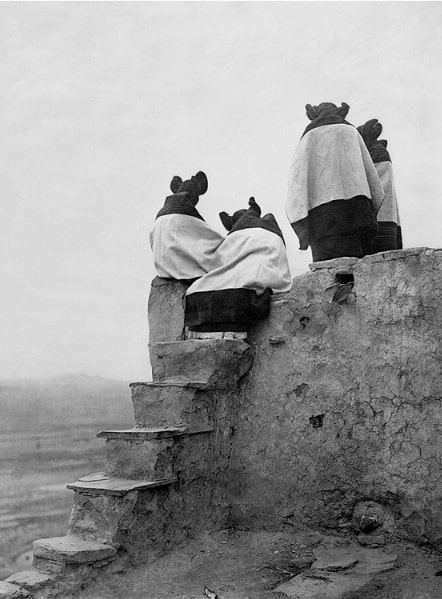
A move to push eastern tribes west of the Mississippi began in earnest with the Indian Removal Act of 1830, resulting in the Trail of Tears. More tragedies and broken treaties followed with the Indian Appropriations Act (the first of which was passed in 1851) and the Dawes Act (1887).
Wishing to further separate Indians from their languages and traditions, the U.S. government built boarding schools like the Carlisle Indian Industrial School in Pennsylvania. The government removed young children from their reservations in Western states and forced an education based on Christianity and European culture on them.
While the practice successfully disconnected young Native American children from their cultural traditions, it was only temporary. Most students returned to their reservation homes as soon as they could.
In an effort to retain their traditions and restore their prominence, the Native Americans living on South Dakota’s Pine Ridge Reservation began a spiritual movement known as the “Ghost Dance.” The idea spread from one reservation to another. Ghost Dance ceremonies and those suspected of participating in them were legally forbidden at the time.
On 29 December 1890, the U.S. Cavalry opened fire on a band of Lakota camped near Wounded Knee Creek on the Pine Ridge Reservation. The soldiers slaughtered from 250 to 300 Native Americans, including women, children, and elders. The incident at Wounded Knee Creek marked the last major conflict between Native Americans and the U.S. military.
For Native Americans, the 1800s was a century filled with tragedy and betrayal. Despite their many challenges, Native Americans retained hope for a better future as they fought to preserve their language, traditions, and families.
Native American Life in the 1900s
The 1900s eventually proved to be a more optimistic time in Native American history. The end of the Indian Wars and the dawning recognition that the people of Native America had a culture and historic traditions worth preserving gradually improved their condition.
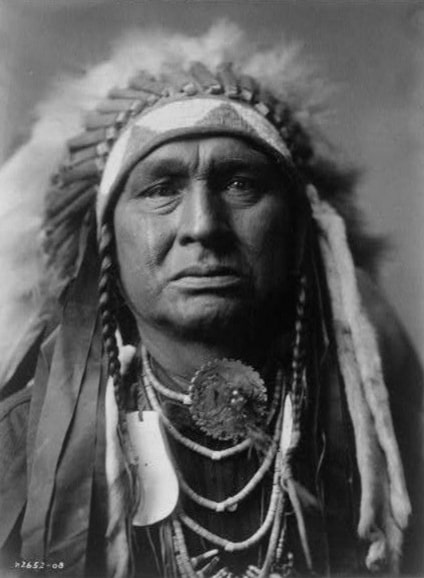
The Native American Civil Rights Movement increased awareness of the wrongs committed against Native Americans. The group launched many successful lawsuits to bring some small amount of legal and political justice.
Sacred ceremonies like the Sun Dance were revived to ensure the welfare of the people and increase their resources. The Native American Church was founded in 1918. And finally, in 1924, the Indian Citizenship Act granted citizenship to all indigenous people born in the U.S. In 1934, the Indian New Deal promoted revitalizing their language, culture, spiritual traditions, and self-government.
Native Americans continued to reclaim their place in colonized America. They established the National Congress of American Indians and other organizations that fought for the rights and benefits of Native American peoples across the country.
This era in Native American history, though gradually better, was still fraught with resistance from the U.S. government and poor conditions on the reservations. For every two steps forward, there was one step back. The government continued to break treaties and pass public laws intended to disempower them.
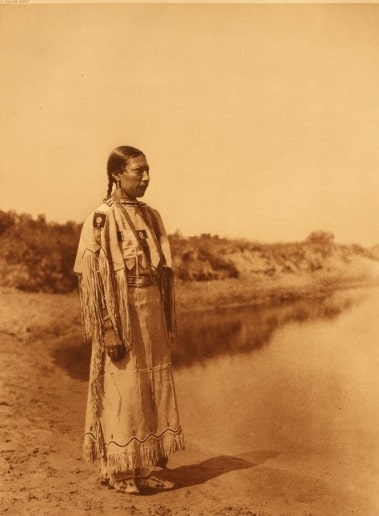
Cultural Revival and the Modern Era
Despite all the challenges they have been through, Native American life remains colorful and diverse. Whether living on reservations or in the city, Native Americans are reclaiming their heritage.
Education
Without a doubt, more work is needed to address underfunding and a lack of resources. However, promoting Native American culture, language, and history in school curricula is being implemented nationwide. The result has inspired a stronger sense of cultural pride. Tribal universities and colleges have emerged and are leading the way as institutions of higher education and opportunity.
Economy
An emphasis on entrepreneurship has improved the economic landscape of Native American communities. Tourism, renewable energy projects, agriculture, and gaming enterprises are some ventures that create jobs for tribal members and revenue for tribal governments. Other beneficial industries include cultural arts and crafts. Grants and donations also help improve their economy.
Health
Limited access to healthcare, socio-economic disparities, and historical trauma have created unique health challenges for Native American communities. Efforts to increase the number of healthcare facilities and promotion of preventive care and mental wellness have increased. Easier access to these healthcare services and active participation will help lead to better health.
Cultural Revitalization
Building resilience in Native American communities and maintaining cultural identity is dependent on preserving the cultures of Native American people. Many efforts continue to bring awareness to and celebrate native traditions. Language immersion programs, tribal museums, powwows, storytelling, art initiatives, and cultural centers are some of the ways today’s Native American populations are contributing to indigenous revitalization.
Native American musicians, fashion designers, actors, artists, and educators continue to challenge stereotypes and present the valuable perspective of their unique lineage. Appreciation of Native American art and culture has grown as representation amplifies the voices of indigenous peoples.
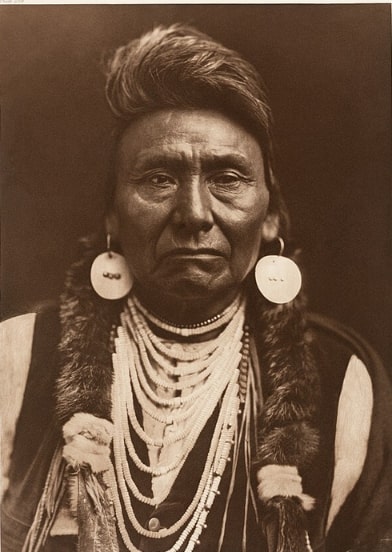
Some Native Americans are utilizing modern technology to help preserve traditional teachings and languages. Digital documentation of family history and cultural events is one way to share Native American culture with future generations and non-natives.
For centuries, Native American people have been victimized by greed and racism, but they are committed to restoring their extraordinary traditions and legacy. Here are the five key aspects that define their cultural revitalization:
- Language preservation
- Cultural celebrations
- Tribal sovereignty
- Economic development
- Environmental stewardship
Modern Native American life includes a wide range of achievements. Joy Harjo became the first Native American poet laureate in 2019, and Deb Haaland made history as the first Native American Cabinet member when she was named Secretary of the Interior. Her appointment as the first indigenous woman in charge of America’s public lands seems not only overdue but just.
Trace Your Native American Ancestry with GenealogyBank
Tracing your Native American ancestry offers a peek into the past that can be both painful and exciting. GenealogyBank provides a variety of tools and resources that can help you explore your family’s Native American history.
GenealogyBank can help guide you through the sometimes overwhelming process of navigating historical records. Our platform provides newspaper archives, birth records, official census data, and more, including the world’s most extensive online obituary collection. With GenealogyBank, you can access over 330 years of Native American coverage, including some tribe-specific Native American newspapers. All of this information is available to members from the comfort of their homes.
Tracing Native American heritage is one of the most challenging jobs for family researchers. Why not get all the help you can? The availability of records is limited for Native Americans compared to other groups, and research can require visiting multiple repositories across the U.S. GenealogyBank simplifies the process by providing access to billions of records online.
Once you’ve discovered your Native American background, it’s time to start building a family tree. GenealogyBank maintains specific databases and comprehensive digitized records relevant to anyone with Native American ancestry. The presence of a Native American ancestor may not be enough to grant you tribal membership, but it does open the door to a part of your heritage you may not have known about before.
Did your ancestors participate in the tragic 1890 Ghost Dance? Are you related to a founding member of the Native American Church? Searching your family history at GenealogyBank is the easiest and most rewarding way to unlock your family history.
Explore over 330 years of newspapers and historical records in GenealogyBank. Discover your family story! Start a 7-Day Free Trial
Note on the header image: Mandan girls gathering berries. From the Edward S. Curtis Collection, Library of Congress, Prints and Photographs Division.

Easier said than done I think? I always wanted to look up my heritage. Just didn’t know how to do it. GenealogyBank.com provides me an opportunity to learn or look up my history.
Good luck with your research, Thomas.